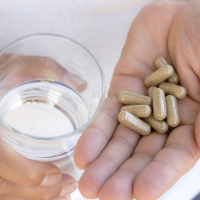
Implications for practice
1. Pitavastatin causes a linear dose‐response reduction in the per cent change from control of blood LDL cholesterol, total cholesterol and blood triglycerides. There is no dose‐response relationship for HDL cholesterol which is increased by 4% on average for all doses. This effect on HDL is not different from the other studied statins. Pitavastatin doses of 1 mg/day to 16 mg/day resulted in a range of 33.3% to 54.7% decrease of LDL cholesterol. From the slope of the lines for every 2‐fold dose increase, there was a 3.93%, 5.35%, and 3.76% decrease in blood total cholesterol, LDL cholesterol, and triglycerides, respectively. The slope of the dose response is similar to the other studied statins: atorvastatin, rosuvastatin, fluvastatin and cerivastatin.
2. For reducing LDL cholesterol, pitavastatin is about 77‐fold more potent than fluvastatin, 6.2‐fold more potent than atorvastatin, 1.7‐fold more potent than rosuvastatin and 3.3‐fold less potent than cerivastatin.
3. There was not enough data to determine risk of withdrawal due to adverse effects due to pitavastatin.
Implication of these findings:
In the recommended dose range, pitavastatin lowers LDL cholesterol more than fluvastatin and cerivastatin and less than atorvastatin and rosuvastatin.
Implications for research
More data from randomised placebo‐controlled trials are needed to know the harms of pitavastatin including withdrawals due to adverse effects. This review shows that pitavastatin lowers LDL cholesterol more in females than in males and more when it is given in the evening than when it is given in the morning. These findings need to be further studied.
Read the review: Pitavastatin for lowering lipids
